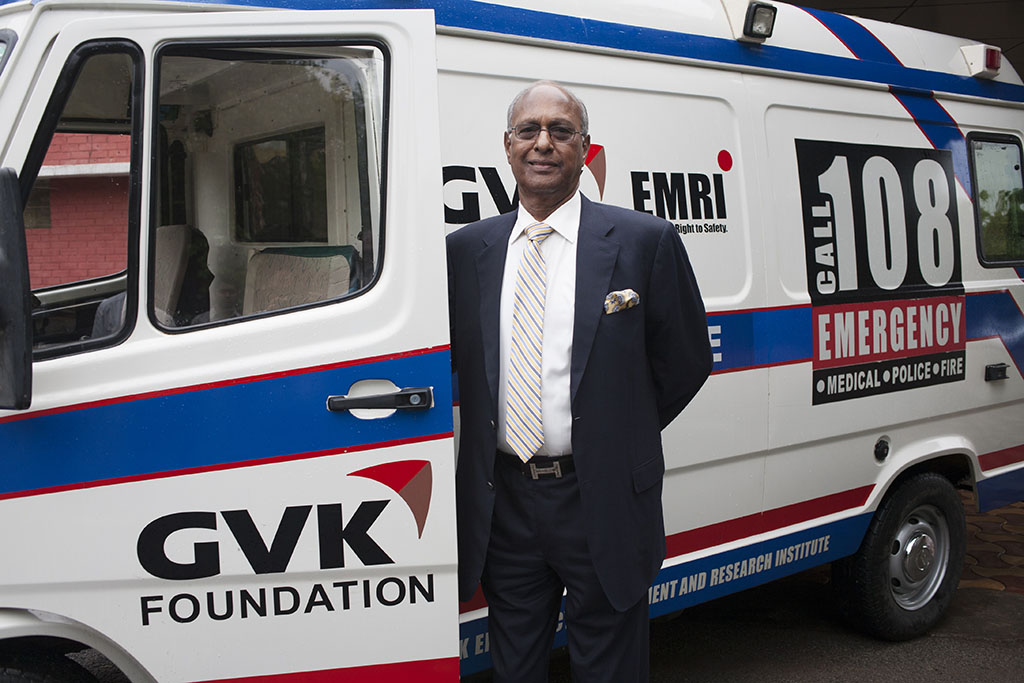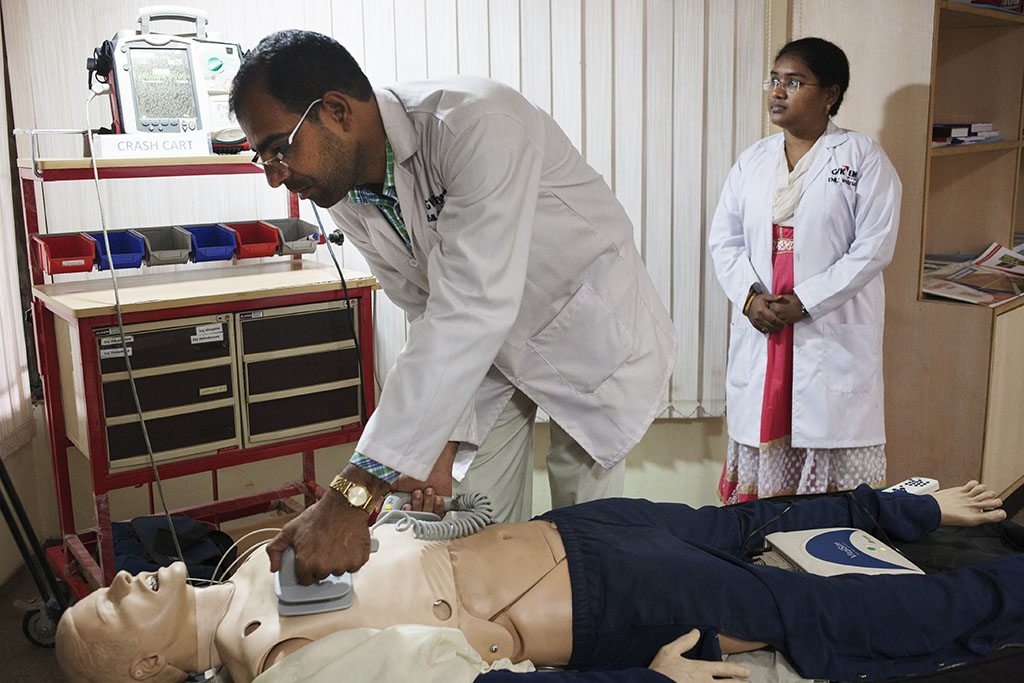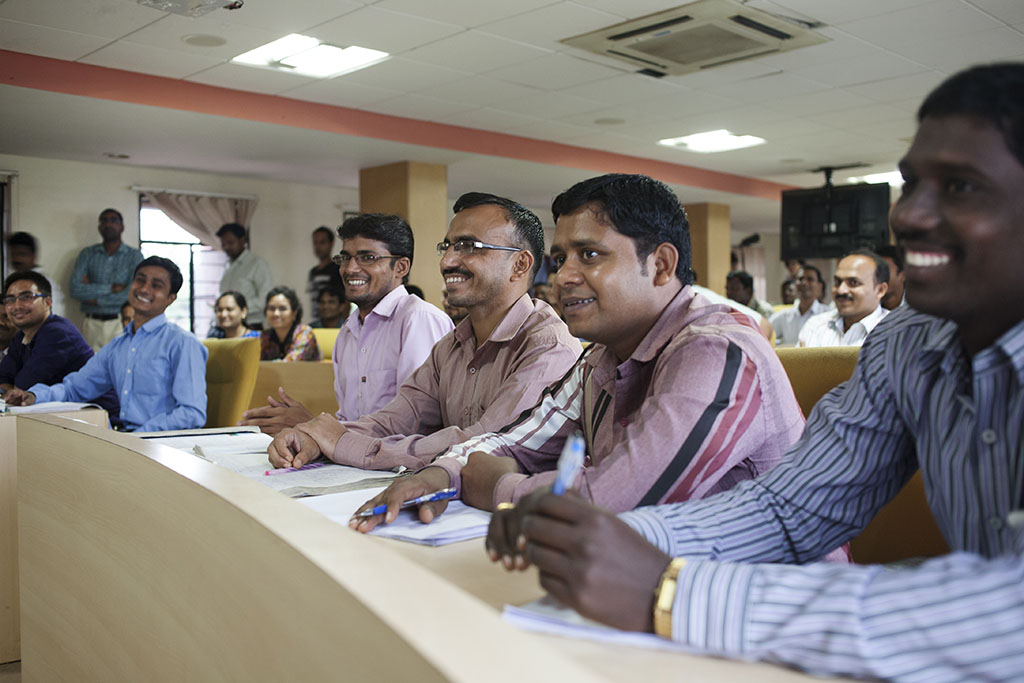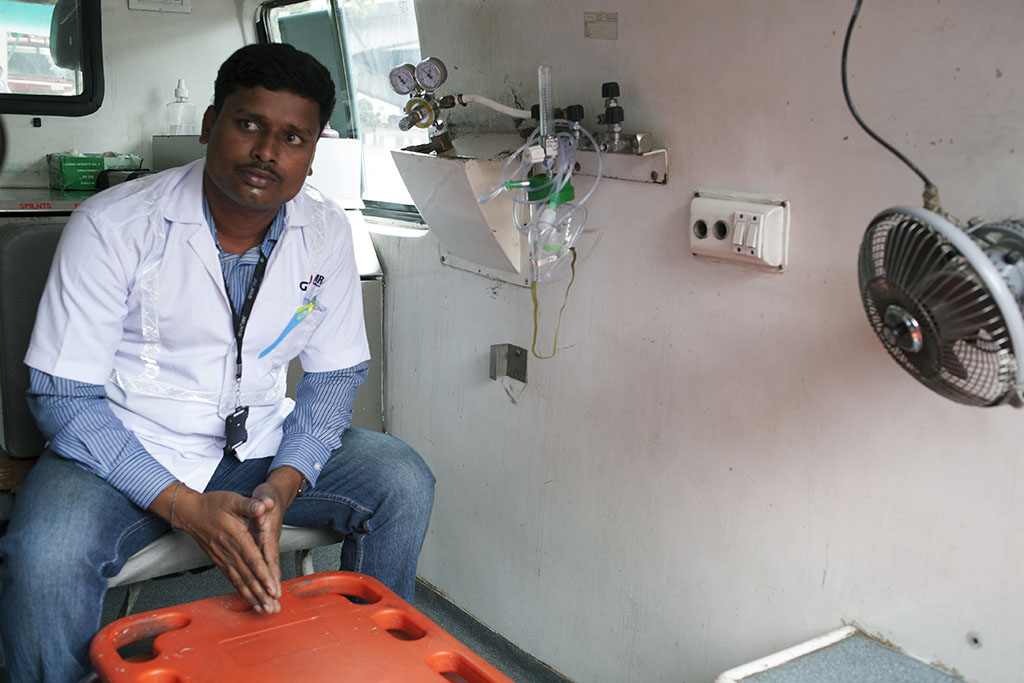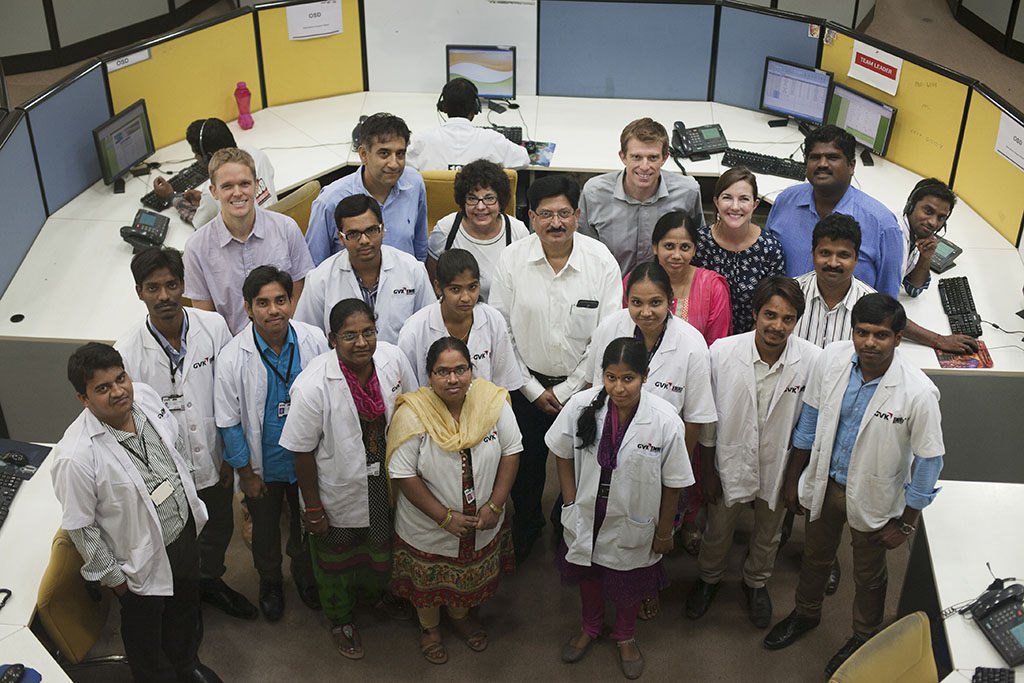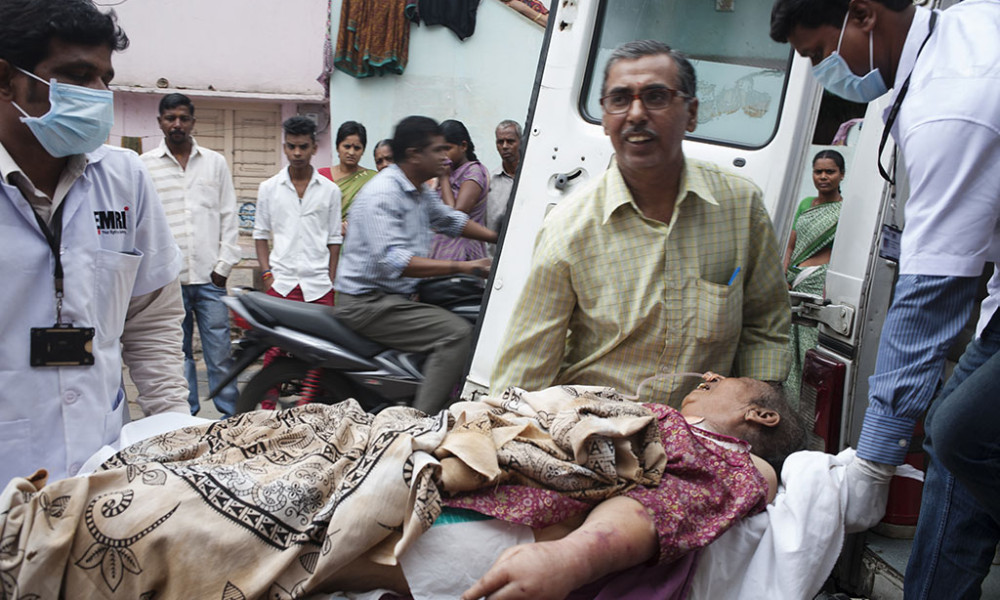
The 108 Ambulance Story – How GVK EMRI has revolutionized emergency services in India
Having a vision to run an emergency management & ambulance service across India is a one thing. Making it actually happen is another! The system that was put together in 2005 by the GVK Foundation in Hyderabad, like minded philanthrophists and with huge aid from the Stanford Medical School has just one goal in mind – “To rescue the countless people dying from treatable injuries and illness simply because they had no way to get to a hospital in time.”
This is highlighted by the scenario Ramana Rao, MD, DPH, director of EMRI’s emergency medicine learning center and research stated, “Some people made attempts by rickshaws, bullock cars, taxis, three-wheelers and sometimes bicycles. People would put a cot on their shoulders and carry someone down from the top of the hill. Out of desperation, they were using every mode of transportation. Poor people are dying for simple reasons. My heart throbs for that.”
What it is
The GVK EMRI (Emergency Management and Research Institute) is a centralized 911-type network in which the general public can call a single number (108). A team of trained professionals arrive to provide aid and emergency services on the way to the hospital. The key being that within 15 minutes of a call the ambulance along with trained ER workers reach the site of the accident and provide immediate critical care enroute to the hospital.
How it Began
In early 2005, Dr. S.V. Mahadevan – Interim Chairman, Stanford Emergency Medicine was visited received an unexpected visit in his Palo Alto, California, office from an Indian businessman, Venkat Changavalli. He flew halfway around the globe for the sole purpose of meeting Dr. Mahadevan. Changavalli described a grand plan to set up a countrywide ambulance system in India and broached the idea of a partnership with Stanford. Mahadevan was deeply skeptical because something like this had never been attempted especially in a large and diverse country like India. Dr. Mahadevan heard out his plan and saw him off, assuming he’d never see him again.
A week later, Dr. Mahadevan received an invite to the launch of the new service on Aug 15, 2005. Dr. Mahadevan came away hugely impressed with how the founders had adapted India’s legendary call-center technology to cater to the medical arena.
First Launch
The service was launched on a small scale in Hyderabad. The number 108 was chosen for the toll-free service because it is considered an auspicious number in multiple religions prevalent in India. The call center at Hyderabad today serves the 83 million people in the states of Andhra Pradesh and Telangana. EMRI has replicated the network in 15 states across a country with a population of 1.2 billion, the second most populous in the world. It deploys five boat ambulances in the tea-producing state of Assam, in the country’s northeast region, where the Brahmaputra, one of Asia’s major rivers, snakes through the province. And there are ambulance rescues in the farthest reaches of the Himalayas, made possible by the construction of roads to access patients.
The Infrastructure
EMRI has a unique model in that each state contributes to the system as does the central government. The funding for such a large endavour amounted to INR 1033 Cr in 2014. Private philanthrophists like Ramalinga Raju (former chair of Satyam Computer Sciences) initially to today where G.V.K Reddy who to date has contributed INR 993 Cr via his family foundation. Mr. Reddy who is a self made billionaire, the son of a famer never forgot his roots. This led him to give back to the society via the EMRI enterprise. He says, “I strongly believe in giving back to society by reaching out to the masses. It couldn’t have been fulfilled better than providing emergency care and saving lives. It gives me immense satisfaction that EMRI 108 services are reaching out to the poorest of the poor in rural areas.”
The funding is used to pay salaries and buy ambulances, design them to Indian specifications and needs. Vehicles unlike in the U.S are equipped with sturdy side benches to seat 5-6 family members as well. Though the equipment and supplies needed were being provided for by the government, India had no paramdeics or emergency medical technicians to staff the vehicles.
Stanford School of Medicine joins the EMRI effort
The kind of expertise required in emergency medicine wasn’t available in India and the GVK EMRI model having taken flight needed well trained technicians. Chagavalli Googled and found that Stanford Medicine was the best in the world. This is how he came upon Dr. Mahadevan who’s name literally translates to “God” in Hindi. Mahadevan initially came on board as a consultant in 2005, but as progress sped up Stanford School of Medicine signed a formal agreement to develop an educational curriculum and train an initial group of 150 highly skilled paramedics and 30 paramedic instructors.
Dr. Mahadevan wasn’t a mere facilitator. He made sure they first batch graduated in 2009 and set into motion a cycle where the trained paramedics would become instructors themselves, while maintaining Stanford’s high standards. Paramedic instructors today use simulation models to show how ventricular fibrillation should be handled and even handled theory on the basics of heart disesase. Initially the students are often shy and tentative at first and have to be coached in how to establish a presence in chaotic situations, particularly roadside accidents, which tend to attract excited and unruly mobs of people who can interfere with treatment.
The Stanford team also had to tailor the curriculum to local needs which are very different from those in the United States. Cases of – delivering babies at home, snake bites, pesticide poisoning are unheard of in the U.S but commonplace in India. The Stanford team developed protocols for India, and in doing so created many firsts. Obstreic care is one of those which are treated like “commandments” from the Bible and help maintain international standards of care in India.
No Easy Task
While the idea of an emergency ambulance service, Stanford program trained ER technicians, the funding and business model all seem fine, the on field transition for the 108 GVK EMRI service wasn’t easy. When the early crop of paramedics first began working in the field, they were an unknown quantity and often faced hostile crowds. Matt Strehlow, MD, clinical associate professor of emergency medicine at Stanford mentions a particular case in 2007 at Hyderabad when a neighbor called 108 to report two children who had been tied up and abused. “We arrive and there’s this huge crowd. The EMT looks at us and tells us to stay in the ambulance,” he says. “People were yelling and rocking the ambulance. They didn’t trust us. They didn’t understand. They were afraid.”
Today, however, the emergency responders are welcomed with open arms. Sometimes they deliver such good care that patients don’t want to leave the ambulance to enter the hospital, where treatment standards are highly variable, he says. “It’s remarkable how they were able to turn the tide of public thought,” says Strehlow, the new director of Stanford Emergency Medicine International. “They are cheered. People trust the EMTs and that the system is working for them.”
EMRI has signed agreements with many private hospitals that will treat patients free of charge for the first 24 hours.Then the patient may stay there or move to a government facility, where care is free. Many families choose the private option, because the care will be better.
Celebrating 10 Years of GVK EMRI
Stanford and EMRI on Aug 15, 2015 celebrated 10 successful years of providing emergency medicine care and services in India. In this time they’ve worked on enabling generalists who staff emergency rooms in government and rural hospitals. Short courses for physicians have been developed to manage emergencies in adults and children without relying on expensive tools like an MRI and CT scan.
EMRI’s aim is to expand to 20,000 ambulances in the next 5 years, while reducing response time from the current 15 minutes to 10 minutes. In addition to this there are plans in the pipeline to replicate the EMRI model in countries like Sri Lanka, Indonesia and Thailand. The stable model is proof that emergency care if handled in a standardized manner can add up to 5 years to a 67 year life expectancy. So the next time you’re in an accident don’t overlook the road sign that says ‘Dial 108 for Emergency’. The technicians are trained and efficient and the system in place is solid !
For the full article click India’s Medical Miracle
Original Post :Stanford College of Medicine
Image Credits: Stanford College of Medicine
